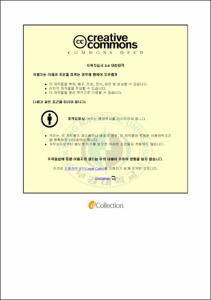모드중첩법에 의한 터널 라이닝의 동적거동
- Alternative Title
- Dynamic Response of Tunnel Lining by the Mode Superposition Method
- Abstract
- This study purposed to examine the effect of ground reaction coefficient, which is one of mediating variables influencing dynamic behavior of the structure under the ground, and for this purpose, we calculated the ground reaction coefficients suitable for in?]situ rock conditions such as hard rock, moderate rock, soft rock and weathered rock and applied them to analysis. Conclusions drawn from this study are as follows.
1. In the results of calculating the axial compressive stress and transverse bending stress of the tunnel using the seismic waves for both the operating basis earthquake(OBE) and the safe shutdown earthquake(SSE), the stresses were high in order of hard rock > moderate rock > soft rock > weathered rock in both the axial and transverse directions regardless of the boundary end conditions, and the displacements at the various points in the longitudinal direction of the tunnel were somewhat different according to boundary end conditions.
2. The natural frequency in the axial free vibration of the tunnel showed an almost constant tendency regardless of the variation in ground reaction coefficients according to the rock type. However, the natural frequency increased with increase in the vibration mode number.
3. In the dynamic analysis of the tunnel on the effect of tunnel lining thickness according to rock classification, the displacement caused by the axial vibration was less when the lining was thick but displacement caused by traverse vibration was constant regardless of lining thickness.
- Issued Date
- 2011
- Awarded Date
- 2011. 2
- Type
- Dissertation
- Publisher
- 부경대학교
- Alternative Author(s)
- Lee, Seok Jun
- Affiliation
- 부경대학교 일반대학원
- Department
- 대학원 토목공학과
- Advisor
- 정진호
- Table Of Contents
- 1 서론 1
1.1 연구배경 및 목적 1
1.2 연구동향 2
1.2.1 국외 연구동향 2
1.2.2 국내 연구동향 4
1.3 지하구조물의 특성 6
1.4 연구방법 및 범위 8
2 지반반력계수 9
2.1 지반분류 9
2.1.1 흙의 분류 9
2.1.2 암반분류 9
2.2 암반지반의 물성치 13
2.2.1 암석의 정적물성치 13
2.2.2 암반의 동적물성치 17
2.3 지반반력계수 20
2.3.1 도로교 설계기준(2005) 21
2.3.2 일본도로교 설계기준 23
2.3.3 Terzaghi의 제안식 24
2.3.4 지하공동구 내진설계기준(2004) 26
2.4 지반반력계수값의 비교 27
3 터널의 자유진동 29
3.1 축방향 자유진동 29
3.2 축직각방향 자유진동 31
3.3 자유진동수에 대한 매개변수의 영향 33
3.3.1 해석단면 33
3.3.2 기본 입력자료의 구성 34
3.3.3 지반 강성에 의한 영향 34
4 터널의 강제진동 38
4.1 지반거동 38
4.1.1 지진파 38
4.1.2 지진파 전파효과 39
4.1.3 정현파 40
4.2 모드중첩법에 의한 강제진동 수식전개 41
4.2.1 축방향 강제진동 41
4.2.2 축직각방향 강제진동 43
5 터널의 동적응답 46
5.1 일시적 변위응답과 정상적 변위응답 46
5.2 터널의 지점위치별 변위와 (휨)변형률응답 47
5.2.1 지점위치별 변위응답 47
5.2.2 지점위치별 변형률응답 57
5.3 해석결과 66
5.3 터널 라이닝 두께에 따른 영향 76
6 결 론 81
참고문헌 83
- Degree
- Master
- Files in This Item:
-
-
Download
 모드중첩법에 의한 터널 라이닝의 동적거동.pdf
기타 데이터 / 44.77 MB / Adobe PDF
모드중첩법에 의한 터널 라이닝의 동적거동.pdf
기타 데이터 / 44.77 MB / Adobe PDF
-
Items in Repository are protected by copyright, with all rights reserved, unless otherwise indicated.